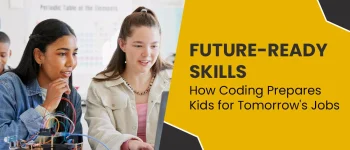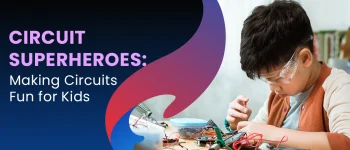The article suggests five innovative ideas to make learning fun for kids. The first idea is to use virtual field trips, which allow children to explore different places and cultures from the comfort of their homes. The second idea is to incorporate technology and gamification into education, such as using educational apps and online games. The third idea is to create a DIY (do-it-yourself) science lab at home, encouraging children to conduct hands-on experiments. The fourth idea is to introduce coding skills, which can enhance problem-solving abilities. Lastly, the article recommends outdoor learning activities, such as gardening and nature walks, to connect education with the environment..
Learning can be an incredibly enriching experience for children, but traditional education methods often lack the engagement and excitement necessary to capture their attention. In a world where technology and entertainment are ever-present, it’s essential to provide innovative and fun learning opportunities for children to keep them engaged and motivated. Research has shown that children engaged in fun learning games can encourage students to take risks and become more involved in their learning.
Virtual reality (VR) is an immersive technology that can transport children to a new world of learning where they can explore historical events, experience scientific phenomena, and engage in simulations of real-world scenarios. By seeing, hearing, and interacting with the material, kids are more likely to retain what they’ve learned and stay engaged in their education.
Gamification of learning is another innovative idea that can help children stay engaged and motivated. By incorporating game mechanics into learning, educators can create a more engaging and rewarding experience for children. Minecraft’s Education Edition, for example, allows students to learn about history, science, and coding while playing the game. It also creates a safe space for students to make mistakes and take risks without fear of failure.
Project-based learning is about learning by doing. It encourages children to learn through hands-on projects centered around real-world problems. It gives students the freedom to choose their own topics, take ownership of their learning, and develop critical thinking and problem-solving skills, as well as teamwork and collaboration skills.
Collaborative learning is an interactive approach to education that involves students working together in groups to achieve common goals. It encourages kids to share their knowledge and ideas and to learn from each other’s strengths and weaknesses. Research shows that educational experiences that are active, social, contextual, engaging, and student-owned lead to deeper learning.
Experiential learning involves learning through experience and reflection. Children can explore, experiment, and learn from their own experiences. It helps children understand complex concepts and ideas by allowing them to see them in action. Through experiences such as service learning, role-play simulations, and internships, learners can immerse themselves in real-world scenarios and gain skills that cannot be obtained through classroom learning alone.
In conclusion, fun learning is the key to unlocking a child’s potential and inspiring them to become lifelong learners. Children can unleash their imagination and creativity while building essential skills and knowledge. So why settle for dull lectures and boring textbooks when you can have an adventure-filled learning experience? Let’s break the mold and make learning fun for kids! At Moonpreneur, we understand the needs of this rapidly changing technological world and offer online STEM programs that ignite the flames of entrepreneurship in kids through subjects like Robotics, Game Development, App Development, and Advanced Math. Register for a free 60-minute Robotics Workshop today and let the learning adventure begin!
Source: moonpreneur.com
Hashtags: #Innovative #Ideas #Fun #Learning #Kids













Leave a Reply